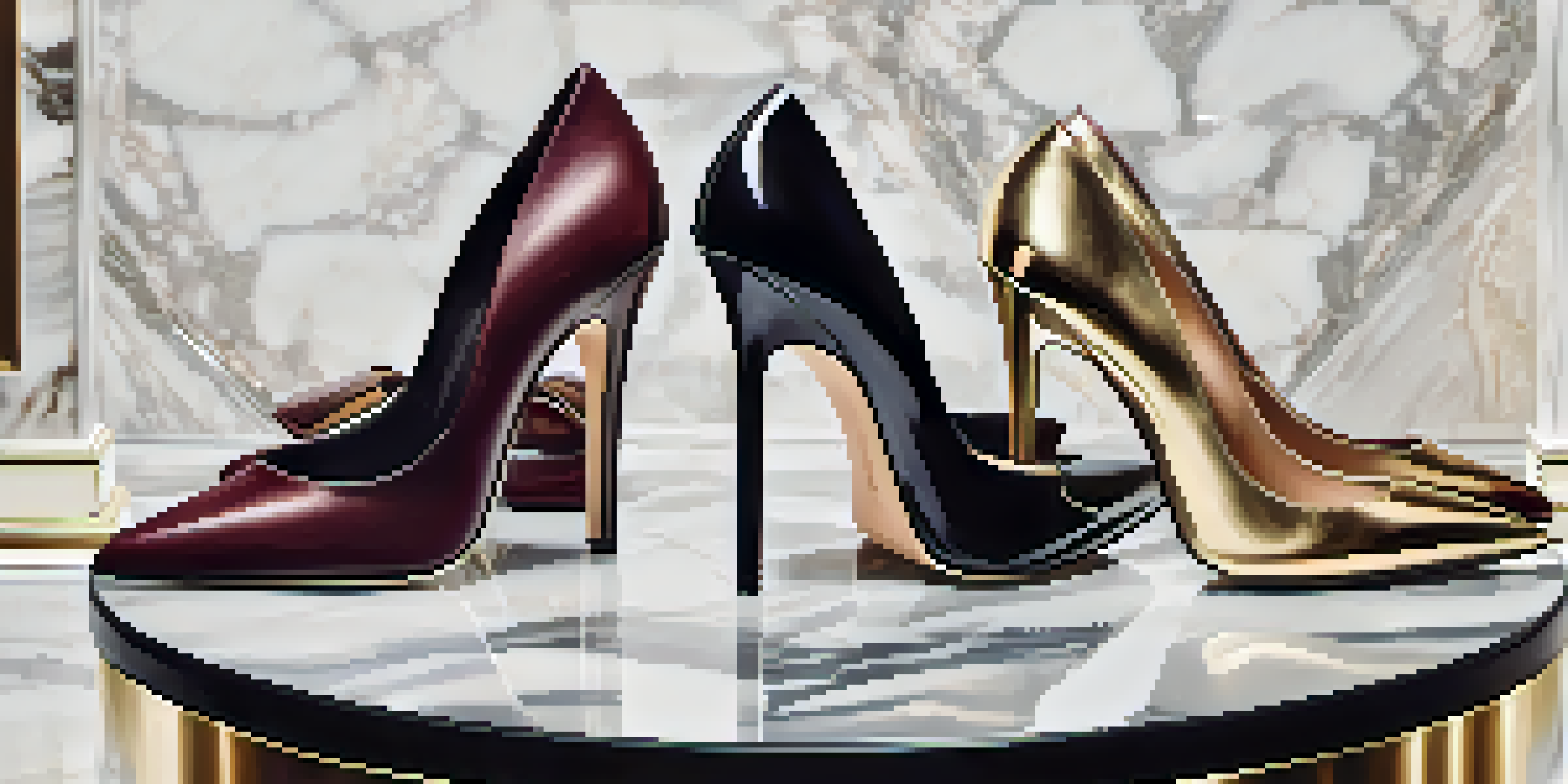High Heels and Feminism: A Complex Relationship in Fashion

The Evolution of High Heels in Fashion History
High heels have a fascinating history that dates back to the 10th century, originally worn by men for practicality while riding horses. Over time, they transitioned into a symbol of femininity and status, particularly in the 17th century when women adopted them to elevate their stature and allure. This evolution reflects broader cultural shifts, showcasing how fashion can both empower and confine women within societal expectations.
High Heels: A Symbol of Empowerment or Oppression?
For some women, high heels represent empowerment, allowing them to express their individuality and confidence. The added height can also create a commanding presence, making heels a popular choice in professional settings. However, others argue that heels can perpetuate unrealistic beauty standards, suggesting that a woman's worth is tied to her appearance, thus complicating the narrative of empowerment.
High Heels: Empowerment vs. Oppression
High heels can symbolize both empowerment and societal pressure, complicating women's relationship with fashion.
Feminism and Fashion: A Complicated Dialogue
The intersection of feminism and fashion often leads to complex discussions about choice versus obligation. Many feminists advocate for women’s right to choose their attire, including high heels, as a form of self-expression. Conversely, critics highlight that societal pressures can sometimes turn that choice into an expectation, thereby limiting true freedom in fashion.
Cultural Perspectives on High Heels and Feminism
Across different cultures, the perception of high heels varies significantly. In some societies, they are seen as a symbol of sophistication, while in others, they may be viewed as tools of oppression. Understanding these cultural nuances is crucial in grasping the broader implications of high heels in the feminist movement.
Cultural Views Shape High Heel Meaning
The perception of high heels varies across cultures, influencing their role in the feminist movement.
The Impact of Social Media on High Heel Culture
In today's digital age, social media plays a pivotal role in shaping attitudes toward high heels. Influencers often showcase heels as stylish and aspirational, contributing to their allure among followers. However, this also opens up discussions about authenticity and the pressure to conform to curated images, prompting many to reevaluate their own choices.
High Heels in the Workplace: A Double-Edged Sword
In professional environments, high heels can signal professionalism and ambition. However, this can create an unspoken expectation for women to wear them, which can be uncomfortable and even detrimental to their health. As workplaces evolve, discussions about appropriate attire are reshaping the narrative around high heels, emphasizing comfort alongside professionalism.
Personal Choice in Fashion Matters
Embracing personal choice in fashion, including the decision to wear high heels, fosters body autonomy and self-expression.
Challenging the Norms: The Rise of Gender-Neutral Footwear
As discussions about gender fluidity gain traction, the fashion industry is witnessing a rise in gender-neutral footwear options. Many brands are now creating shoes that prioritize comfort and inclusivity, moving away from traditional high-heeled designs. This shift not only challenges the norms of women's fashion but also opens up new avenues for self-expression.
Finding Balance: Personal Choice in Fashion
Ultimately, the relationship between high heels and feminism underscores the importance of personal choice in fashion. Women should feel empowered to wear what makes them comfortable and confident, whether that includes high heels or not. Embracing a variety of styles allows for a richer dialogue about body autonomy and self-expression, moving beyond the confines of societal expectations.